 One of the resources every family historian hopes to find and treasure is a family Bible full of handwritten notations of births, marriages, and deaths. These Bibles are often beautiful in themselves for their illuminated pages, or for the well-worn leather covers molded by devoted hands. Not to be overlooked, however, are the enclosures some owners pressed between those pages, enclosures which might yield some of the basic data always sought, and which might also give insight into the owners’ personalities and the events of their daily lives. Continue reading Bible studies
One of the resources every family historian hopes to find and treasure is a family Bible full of handwritten notations of births, marriages, and deaths. These Bibles are often beautiful in themselves for their illuminated pages, or for the well-worn leather covers molded by devoted hands. Not to be overlooked, however, are the enclosures some owners pressed between those pages, enclosures which might yield some of the basic data always sought, and which might also give insight into the owners’ personalities and the events of their daily lives. Continue reading Bible studies
Tag Archives: Object Lessons
“A handsome woman in elaborate dress”
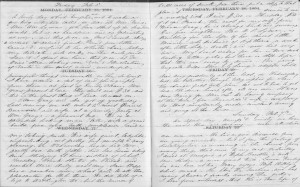
For the last year or so, I’ve been immersed in the diary of Regina Shober Gray (1818–1885), a Philadelphian who lived on Beacon Hill in Boston for more than forty years. During my sabbatical in 2015, I read Bob Shaw’s transcripts of the diary for the 1860s and early ‘70s; later, I reviewed PDFs of the diary volumes for the last decade of Mrs. Gray’s life. At some point in the process, I became aware that the Maryland Historical Society had a photo of Mrs. Gray, but it was only a looming American Ancestors cover story deadline that reminded me that it might be nice to see an image of the diarist.
Given my fascination with Mrs. Gray, I really cannot account for my lack of curiosity! Continue reading “A handsome woman in elaborate dress”
Old genealogies in the digital age
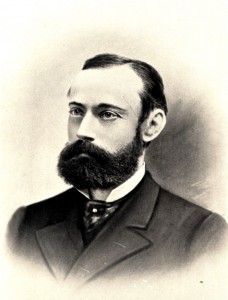
For the past six months, I have been devoting much of my time as Metadata Librarian at NEHGS to making older genealogies from our Boston research library available online in the NEHGS Digital Library and Archive. These genealogies, most of them originally published in the nineteenth and early twentieth centuries, are rare or unique to NEHGS, and have not been previously available online.
By adding them to our Digital Library, we hope that we can not only increase access to these hard-to-find resources, but also better preserve the physical books themselves, which are often suffering from the effects of brittle, acidic paper and deteriorating bindings. We have added items ranging from short, privately printed pamphlets – such as the five-page Family and Antecedents of William Henry Rayner and Jeanie Ann Balmer – to longer, more comprehensive treatises, like Henry Stoddard Ruggles’s The Ruggles Family in England and America. Continue reading Old genealogies in the digital age
Broadway and points west
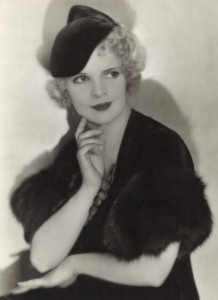
I find that, once I start collecting something, the collection itself tends to dictate its own expansion. Put another way, I don’t always know what will interest me until I start looking at the items on either side of the object I seek to acquire. This is true of genealogical research, where it’s always a good idea to browse the library shelves around the book you are hunting, but of course it’s also true of the photographs I’ve been collecting recently. And, so – given the theme of the last two days’ posts at Vita Brevis – it’s time for another research exercise!
All of these photographs have something, or someone, in common – not pictured, of course. They represent a genus, the Broadway showgirl, that has sadly become extinct. Continue reading Broadway and points west
A thousand words
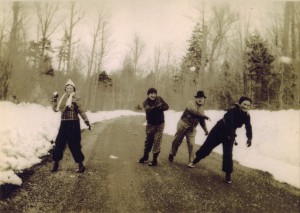
Coming from a family of active amateur photographers, the (still) new digital age of photography has significantly changed the way I look at and convey my world, its events, my life, and my family. Gone are the days of, “Oh, no, I just got to the end of a 36-exposure roll and missed the perfect picture I’ll never get again.” With three expensive cameras sitting in my closet collecting dust, like many of us I now use my smart phone for most of my photographic pursuits. This is not such a bad thing: it’s always in my pocket ready to get, as DeWitt Jones says, “not just a good frame, but a great frame.” Continue reading A thousand words
A Telluride story
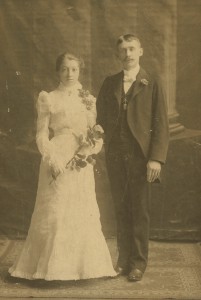
There are many stories that reside in the papers and photographs our forebears set aside to keep. These stories sometimes lack a key, but here is one that, thanks to a loving sister, retains its general outline.
Kenneth Angus McLean was born in 1873 in a farmhouse on Cape Breton, Nova Scotia, the youngest of nine children. As a young man, Kenny left the family farm to join his older sister Christine in Boston, where he would have a wider choice of occupations. He didn’t last long in the confines of the city. Kenny, like so many others, decided to seek his fortune out west. He took out a $1,000 life insurance policy, named his sister as beneficiary, and got on a westbound train. Continue reading A Telluride story
2015: the year in review concluded
 On the first day of 2016, Vita Brevis can boast 780,157 page views over the life of the blog. With dozens of voices writing for the blog, I hope that readers will check back often to see what’s new at Vita Brevis. Following yesterday’s blog post, here follows a snapshot of the second six months of 2015 at the blog.
On the first day of 2016, Vita Brevis can boast 780,157 page views over the life of the blog. With dozens of voices writing for the blog, I hope that readers will check back often to see what’s new at Vita Brevis. Following yesterday’s blog post, here follows a snapshot of the second six months of 2015 at the blog.
Robert Charles Anderson’s post on the new Great Migration Directory was published on 1 July:
The Great Migration Directory attempts to include all those who immigrated to New England during the Great Migration, and only those immigrants. After much examination of the historical record, and particularly of the activities of the passenger vessels each spring, I determined that the Great Migration ended during 1640, and so this volume is designed to include every head of household or unattached individual who arrived between 1620 and 1640. Continue reading 2015: the year in review concluded
The Philadelphia box

In 1860, when Regina Shober Gray began keeping her diary, gift-giving was spread between Christmas and New Year’s Day: indeed, the latter day was the more important of the two in the eyes of the Gray children. For at least the period of the Civil War, the Gray family of Boston impatiently awaited the arrival of “the Philadelphia box” – containing presents from Mrs. Gray’s siblings[1] – with shipment timed for the days around January 1. Continue reading The Philadelphia box
A Victorian Christmas album
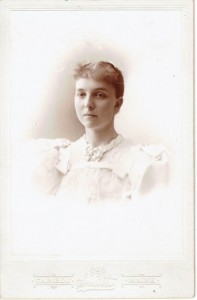
Searching for anything in My Old House carries certain risks, usually in the form of an interesting distraction (corsets, small bones I still refuse to discuss, or shoe lasts). My latest search turned up my maternal grandmother’s greeting card album, so I’ve completely forgotten what it was I initially sought! The album is a treasure of illustrated birthday and calling cards from friends and relatives, small “reward of merit” cards presented by her teachers, Valentine’s Day cards, Easter cards, and, of course, Christmas cards.
Lula Atlant Roberts McLeod (1876–1958) was a teacher in the schools of central Aroostook County, Maine, before her marriage in December 1899. Christmas cards had gained popularity from their beginnings in the 1850s, and by the 1890s, when my grandmother was teaching, cards with silk fringes were offered. She signed hers “Lula Roberts, Teacher.” Continue reading A Victorian Christmas album
Quality control
Editor’s Note: This is part three of a series on digitizing our special collections. The previous posts can be read here and here.
 Good news! The next phase of our digitization project is under way. We’ve just received the first batch of images from our scanning partner, which means we can begin work on the next step: quality control.
Good news! The next phase of our digitization project is under way. We’ve just received the first batch of images from our scanning partner, which means we can begin work on the next step: quality control.
In the last post, I talked about the organizational aspects of digitization – sorting and physically preparing the items, creating a finding aid, and adding instructions when needed to make sure all the documents are scanned correctly. One of the first things we did upon getting the Howard family papers back from our scanning partner was to make sure that the organization was honored and that all of the pages were scanned. Continue reading Quality control